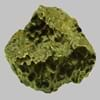Definition
Epidosite is a highly altered epidote and quartz bearing rock which is a type of metasomatite, essentially altered basalt
A sedimentary rock, deposit of a submarine turbidity currents and are composed of layered particles
Origin
Unknown
European Foreland Basins
Discoverer
Unknown
Arnold H. Bouma
Etymology
Not Available
From Medieval Latin turbiditas, from Latin turbidus (turbid). Turbidity current is from 1939
Class
Igneous Rocks
Sedimentary Rocks
Sub-Class
Durable Rock, Medium Hardness Rock
Durable Rock, Soft Rock
Group
Volcanic
Not Applicable
Other Categories
Coarse Grained Rock, Fine Grained Rock, Opaque Rock
Coarse Grained Rock, Fine Grained Rock, Opaque Rock
Texture
Glassy, Massive, Porphyritic, Scoriaceous, Vesicular
Mud-rich, Sandy
Color
Black, Brown, Light to Dark Grey
Black, Brown, Colourless, Green, Grey, Pink
Durability
Durable
Durable
Scratch Resistant
Yes
Yes
Appearance
Dull and Soft
Dull and Banded
Interior Uses
Decorative Aggregates, Floor Tiles, Homes, Hotels, Interior Decoration
Bathrooms, Countertops, Decorative Aggregates, Flooring, Homes, Interior Decoration
Exterior Uses
As Facing Stone, Garden Decoration, Office Buildings, Paving Stone
As Building Stone, As Facing Stone, Paving Stone, Garden Decoration
Other Architectural Uses
Curbing
Curbing
Construction Industry
As Dimension Stone, Cobblestones, Rail Track Ballast, Roadstone
As Dimension Stone, Cement Manufacture, Construction Aggregate, for Road Aggregate, Making natural cement
Medical Industry
Not Yet Used
Not Yet Used
Antiquity Uses
Artifacts, Monuments, Sculpture, Small Figurines
Artifacts, Monuments, Sculpture
Commercial Uses
Commemorative Tablets, Creating Artwork
Cemetery Markers, Creating Artwork
Types
Alkaline Basalt, Boninite, High Alumina Basalt, Mid Ocean Ridge Basalt (MORB), Tholeiitic Basalt, Basaltic trachyandesite, Mugearite and Shoshonite
Not Available
Features
Has High structural resistance against erosion and climate, Very fine grained rock
High silica content, Host Rock for Lead
Archaeological Significance
Famous Monuments
Data Not Available
Data Not Available
Famous Sculptures
Data Not Available
Data Not Available
Formation
Epidosite is a fine-grained, hard rock which is a type of metasomatite, essentially altered basalt. It forms with or without crystallization, either below the surface as intrusive rocks or on the surface as extrusive rocks.
Turbidite is a type of sedimentary rock formed when a river carries or transports pieces of broken rock as it flows. These particles then settle down and are subjected to high temperature and pressures hence forming Turbidite.
Mineral Content
Olivine, Plagioclase, Pyroxene
Coesite, Quartz, Sand
Compound Content
Aluminium Oxide, CaO, Iron(III) Oxide, FeO, Potassium Oxide, MgO, MnO, Sodium Oxide, Phosphorus Pentoxide, Silicon Dioxide, Titanium Dioxide
CaO, Carbon Dioxide, MgO
Types of Metamorphism
Burial Metamorphism, Cataclastic Metamorphism, Hydrothermal Metamorphism, Impact Metamorphism
Not Applicable
Types of Weathering
Biological Weathering, Chemical Weathering, Mechanical Weathering
Biological Weathering, Chemical Weathering, Mechanical Weathering
Types of Erosion
Not Applicable
Chemical Erosion, Coastal Erosion, Sea Erosion, Water Erosion, Wind Erosion
Grain Size
Fine to Coarse Grained
Fine to Coarse Grained
Fracture
Conchoidal
Splintery
Streak
White to Grey
White, Greenish White or Grey
Porosity
Less Porous
Very Less Porous
Luster
Not Available
Metallic
Compressive Strength
Not Available
Cleavage
Not Available
Disjunctive
Specific Gravity
2.8-3
2.46-2.73
Transparency
Opaque
Opaque
Density
Not Available
1.6-2.5 g/cm3
Specific Heat Capacity
Not Available
Resistance
Heat Resistant, Pressure Resistant, Wear Resistant
Heat Resistant
Deposits in Eastern Continents
Asia
India, Russia
Not Yet Found
Africa
South Africa
Western Africa
Europe
Iceland
Austria, Belarus, Romania, Switzerland, United Kingdom
Others
Not Yet Found
Not Yet Found
Deposits in Western Continents
North America
Canada, USA
Canada, USA
South America
Brazil
Brazil, Colombia
Deposits in Oceania Continent
Australia
Not Yet Found
New Zealand, Western Australia
Epidosite vs Turbidite Characteristics
Though some rocks look identical, they have certain characteristics which distinguish them from others. Characteristics of rocks include texture, appearance, color, fracture, streak, hardness etc. Epidosite vs Turbidite characteristics assist us to distinguish and recognize rocks. Also you can check about Properties of Epidosite and Properties of Turbidite. Learn more about Epidosite vs Turbidite in the next section. The interior uses of Epidosite include Decorative aggregates, Floor tiles, Homes, Hotels and Interior decoration whereas the interior uses of Turbidite include Bathrooms, Countertops, Decorative aggregates, Flooring, Homes and Interior decoration. Due to some exceptional properties of Epidosite and Turbidite, they have various applications in construction industry. The uses of Epidosite in construction industry include As dimension stone, Cobblestones, Rail track ballast, Roadstone and that of Turbidite include As dimension stone, Cement manufacture, Construction aggregate, For road aggregate, Making natural cement.
More about Epidosite and Turbidite
Here you can know more about Epidosite and Turbidite. The life cycle of a rock consists of formation of rock, composition of rock and transformation of rock. The composition of Epidosite and Turbidite consists of mineral content and compound content. The mineral content of Epidosite includes Olivine, Plagioclase, Pyroxene and mineral content of Turbidite includes Coesite, Quartz, Sand. You can also check out the list of all Igneous Rocks. When we have to compare Epidosite vs Turbidite, the texture, color and appearance plays an important role in determining the type of rock. Epidosite is available in black, brown, light to dark grey colors whereas, Turbidite is available in black, brown, colourless, green, grey, pink colors. Appearance of Epidosite is Dull and Soft and that of Turbidite is Dull and Banded. Properties of rock is another aspect for Epidosite vs Turbidite. The hardness of Epidosite is 6 and that of Turbidite is 3. The types of Epidosite are Alkaline Basalt, Boninite, High Alumina Basalt, Mid Ocean Ridge Basalt (MORB), Tholeiitic Basalt, Basaltic trachyandesite, Mugearite and Shoshonite whereas types of Turbidite are Not Available. Streak of rock is the color of powder produced when it is dragged across an unweathered surface. The streak of Epidosite is white to grey while that of Turbidite is white, greenish white or grey. The specific heat capacity of Epidosite is Not Available and that of Turbidite is 0.92 kJ/Kg K. Depending on the properties like hardness, toughness, specific heat capacity, porosity etc., rocks are resistant to heat, wear, impact, etc.Epidosite is heat resistant, pressure resistant, wear resistant whereas Turbidite is heat resistant.





